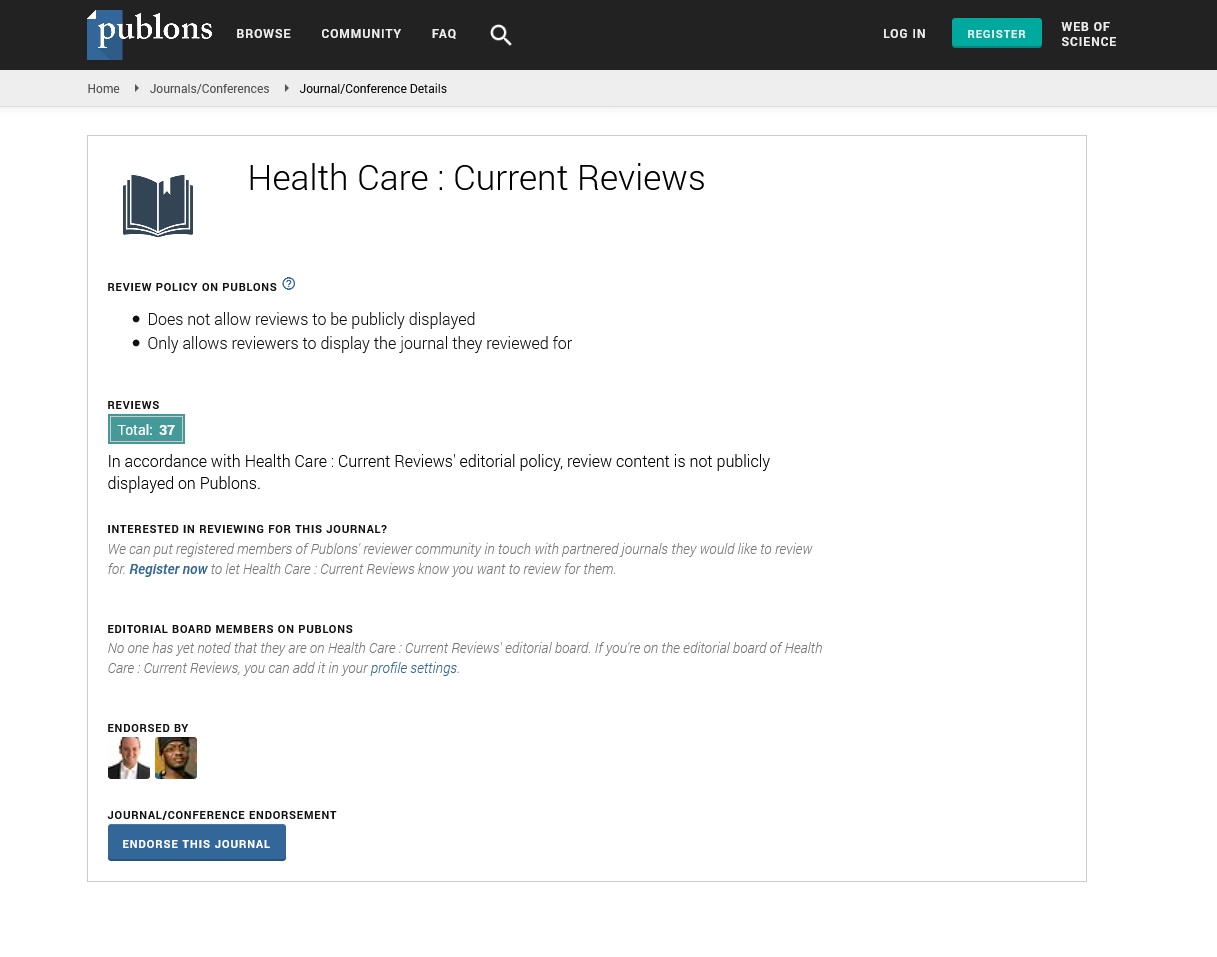Indexed In
- Open J Gate
- Academic Keys
- RefSeek
- Hamdard University
- EBSCO A-Z
- Publons
- Geneva Foundation for Medical Education and Research
- Google Scholar
Useful Links
Share This Page
Journal Flyer

Open Access Journals
- Agri and Aquaculture
- Biochemistry
- Bioinformatics & Systems Biology
- Business & Management
- Chemistry
- Clinical Sciences
- Engineering
- Food & Nutrition
- General Science
- Genetics & Molecular Biology
- Immunology & Microbiology
- Medical Sciences
- Neuroscience & Psychology
- Nursing & Health Care
- Pharmaceutical Sciences
Opinion Article - (2025) Volume 13, Issue 1
Vaccine Distribution Strategies: Overcoming Challenges in Global Healthcare
Wei Zhang*Received: 26-Feb-2025, Manuscript No. HCCR-25-28736; Editor assigned: 28-Feb-2025, Pre QC No. HCCR-25-28736 (PQ); Reviewed: 14-Mar-2025, QC No. HCCR-25-28736; Revised: 21-Mar-2025, Manuscript No. HCCR-25-28736 (R); Published: 28-Mar-2025, DOI: 10.35248/2375-4273.25.13.428
Description
Distributing vaccines across the world remains one of the most demanding tasks in healthcare. While science has advanced rapidly in the development of vaccines, ensuring that these vaccines reach people everywhere—regardless of geography, income, or infrastructure—presents a wide range of challenges. The process involves more than just production; it includes logistics, storage, community engagement and international coordination.
One of the biggest hurdles in vaccine delivery is transportation. Vaccines often require controlled environments to maintain their strength and effectiveness. This means they must be stored and moved within specific temperature ranges. In countries with limited infrastructure, such as unreliable electricity or difficult road conditions, maintaining the correct environment during transport can be difficult. Solutions such as solar-powered refrigeration or portable cold storage units have been introduced to help deal with these obstacles, especially in remote areas.
Storage capacity is another issue. Health facilities, particularly in low-income or rural regions, may not have the space or equipment needed to store large quantities of vaccines. This limits the volume they can receive at any one time and makes it necessary to organize more frequent deliveries, which increases the cost and complexity of the process. Investment in local storage solutions, staff training and infrastructure upgrades is necessary for any long-term improvement.
Staffing and training also influence vaccine distribution. Even with adequate supply, the presence of qualified personnel to administer doses is essential. In areas with limited healthcare workers, long wait times and lower coverage rates can result. Training programs, mobile teams and partnerships with community leaders can help expand the number of people able to provide vaccines and increase trust within the population.
Another significant factor is the availability of accurate data. Keeping track of who has received which vaccine, when they received it and when they are due for additional doses is important. Without a reliable system, people may miss second or booster doses, or some may receive vaccines unnecessarily. Digital health records and mobile registration systems have improved this process in some countries, but others still rely on paper-based systems that are harder to manage and prone to loss or damage.
Misinformation has also proven to be a major barrier to successful vaccine distribution. Fear and confusion can spread quickly, especially on social media platforms. In some regions, historical mistrust in healthcare systems adds to the hesitation. To address this, public awareness campaigns that use local languages, cultural references and trusted voices are needed. When people understand how vaccines work and why they are important, they are more likely to participate in vaccination programs.
Funding plays a large role in shaping vaccine distribution plans. Wealthier nations often have the means to secure more doses faster, while others rely on donations or global initiatives. Organizations such as COVAX have stepped in to promote more equal distribution, but gaps still exist. These differences create delays and uneven coverage, which in turn can extend the duration of outbreaks and increase health risks globally.
Collaboration between governments, non-profit organizations and private companies is key to solving many of these issues. No single group can manage all the moving parts involved in global vaccine distribution. By working together, sharing information and coordinating efforts, it becomes easier to reach communities that might otherwise be missed.
Vaccine distribution is not a one-time task. It must be sustained over time to maintain immunity across populations. Booster doses, new variants and population growth all affect how vaccines need to be delivered. Systems must be able to adapt to changes in demand, manage supplies efficiently and keep communities engaged throughout the process.
Technology also has a growing role in improving outcomes. From GPS tracking of shipments to AI-driven planning tools, there are more ways than ever to manage delivery, monitor storage conditions and forecast demand. However, the success of these tools depends on proper training, access to equipment and ongoing support.
Effective vaccine distribution depends on many factors working together—from planning and production to delivery and public education. Each step requires attention, cooperation and resources. While the challenges are many, continued commitment to improving systems and supporting those on the ground can help ensure that vaccines reach everyone who needs them, no matter where they live.
Citation: Zhang W (2025). Vaccine Distribution Strategies: Overcoming Challenges in Global Healthcare. Health Care Curr Rev. 13:428.
Copyright: © 2025 Zhang W. This is an open access article distributed under the terms of the Creative Commons Attribution License, which permits unrestricted use, distribution and reproduction in any medium, provided the original author and source are credited.

